To run the forums, host the website, and travel, I charge a universal service fee for my reviews. This review was sponsored by Xtracycle. My goal is to be transparent and unbiased, this video and written review are not meant to be an endorsement of Xtracycle products.
What does RFA stand for? Well in the case of the Xtracycle RFA, it stands for “ready for anything”, and that certainly may ring true. The concept behind this bike is an adaptable mini tail cargo bike with many upgrades, options, or even choices in motor and battery. The bike comes in 2 colors (black or yellow), 1 frame size (a mid-step frame design), and 2 styles, a Utility and Sport version. Today we are looking at the Utility version with a Bosch Performance Line Speed motor and PowerPack 500 battery. The Utility is designed with a longer platform rack in the back that extends the bike by about 7” or so. This allows the bike to fit more than the Sport version, but you can remove it or even add it to a regular sport version as your bike may need to adapt to your life needs. We also have the optional front platform rack on our testing bike today, this is bolted to the head tube so the load stays even and steady when taking turns. The bike is pretty strong and comfortable, thanks to the steel frame and 400lb max weight limit. As tested, it weighed about 70lbs, but without all the accessories, you may be sitting somewhere around 64lbs total weight for the bike. Also for load stability is this deflopilator spring, sturdy double leg kickstand, and high volume tires. These 24” x 2.5” Maxxis tires are professional grade, like something you might see on a BMX bike, but I am really glad they are here because they feel great and capable. I love the battery integrated lights here, they have them both in the front and the rear. The front headlight even has side windows to let light peek out of the profile so others can see you. Safety has always been a priority for myself and other cyclists, so it’s nice to see that more and more companies are including these on ebikes. As I mentioned before there are a lot of options and upgrades like foot rest and peg options, or even this “Snack Bar” handle attachment. The Snack Bar acts as a comfortable and colorful handlebar attachment for the rear if someone chooses to sit back there. Other than options, there are a lot of included accessories here too. I really like the 4 bottle cage bosses, plastic sticker slap guard, locking ergonomic grips, and swept back handlebars.
The Bosch motor options vary for this bike, including choices between the Performance Line, Performance Line Speed, and the Performance Line CX motor. For the review bike, we have the Bosch Performance Line Speed, which offers up to 63 Newton meters of torque and 120 RPM pedal support. This means that it can start and climb well (even if you’re not in the optimal gear), and it will allow you to spin quickly to reduce leg muscle power and focus on cardio if that’s your preference. It is my preference, in fact, because I have a knee injury. Some other mid-drive electric bike systems (even Bosch’s own Active Line motors) max out around 100 or 110 RPM, so you literally have to switch gears in order to ride faster. It’s less of an issue when your max speed is 20mph, but it becomes very noticeable with a speed pedelec like this. The Performance Line motors have taken a unique approach with their chainring spec that makes them quick and efficient for the motor, but louder and possibly less efficient for you as the rider (if the bike is turned off or you’re trying to pedal beyond the supported speeds). They have a reduction gear inside that spins the chainring at 2.5 revolutions for each crank arm revolution. Bosch representatives have told me that it improves chain retention, but it also makes swapping chainring sizes less straightforward… because they are proprietary. It means that the chain cover is smaller and the chain itself is lower, but might allow for increased chain contact with the right chain stay when riding over bumpy terrain. I trust Bosch, have enjoyed this and other motors that they produce on many other leading electric bikes over the years, I feel that the trade-offs are worth it. One thing that is definitely a pro here, is the two-year comprehensive warranty and support from a wide network of Bosch-Certified dealers. I visit shops all over North America and many have told me that the Bosch drive systems are some of their most reliable, and that the company provides quick support with hardware that does need fixes or replacements. Mechanically, the bike has a Shimano Deore derailleur with a Shadow Plus clutch system. This allows you to make the chain tight for rigid riding or lose for maintenance. The setup has 10 speeds, trigger shifters and a fantastic 11-42tooth cassette in the rear with a 20 tooth chainring in the front. Stopping the bike is a set of 180mm hydraulic disc brake rotors with dual pistons, so a really quality setup.
Powering the bike is your choice of a Bosch PowerPack 400 or PowerPack 500. You can even opt for a dual battery setup, but this will cost some money as just the mounting hardware is $250 and that doesn’t include the cost of the extra battery. Anyway, since we have the Performance Line Speed motor, we got the upgraded high-capacity Bosch PowerPack 500 offering 36 volts and 13.4 amp hours for nearly 500 watt hours of capacity. It’s one of the most widespread electric bike batteries in the world right now and uses the same form factor and mounting interface as the older, lower capacity, Bosch PowerPack 400. This means that finding replacements, borrowing additional packs, or renting batteries when traveling becomes much easier. The plastic casing is durable but lightweight, especially compared to the new PowerTube 500 which weighs 6.3lbs vs 5.7lbs. PowerPack batteries do stand out a bit visually because they mount on top of the frame tubing, but the manufacturer has done their best to hide the pack a bit. The pack clicks down and secures with a high quality ABUS Ampero locking core. I noticed that the core is spring loaded, so you don’t need to insert and twist the key when mounting the pack… just be sure to push down until you hear it click. Any Bosch certified ebike dealer can help you adjust the mounting interface over time if you notice rattling or loosening, it’s a durable convenient design. The charger here is the lightweight but slower 2amp charger, if you opt for the dual battery setup, you get a 4amp charger. You can charge this battery on or off the bike frame, making it great for commuters who need to charge inside at work, and you won’t be as likely to drop the battery during transport because it has a big plastic loop handle at the top. To maximize the life of this and most Lithium-ion batteries, try to keep it above 20% capacity and avoid extreme heat and cold. If you know you won’t be riding for some time, store at 50% to reduce stress on the Lithium-ion cell chemistry.
The display here is the Bosch Purion, not my favorite of the Bosch displays, but I have been told you can upgrade these to Intuvia and even Kiox displays. Once you’ve charged and secured the battery pack, operating the bike is pretty straight forward. The control panel consists of a grayscale LCD with four surrounding buttons. The power button is built into the top edge, a + and – button is reachable along the left front portion, and a walk mode button is built into the lower edge. Pressing the power button brings the LCD to life quickly, and a faint white glow is active at all times making it readable in low lighting conditions. I’ve created an in-depth guide to the Bosch Purion display panel, with video overview, in the EBR forums. It’s not removable however, and the Micro-USB port on the right edge is not active for charging as is the case with the larger Bosch Intuvia. I much prefer the Intuvia for its size and additional menus (shift recommendation, clock, max speed, average speed, and trip time), and some shops can upgrade you to this display for ~$200. With Purion, you’ve got a streamlined and simple interface with the necessities including trip distance, total distance, and range estimate. You can cycle through these menus by holding the – key, and you can reset trip distance by holding – and + simultaneously for a couple of seconds. The main portion of the display is used to show your current speed and assist level. If you’d like to change units from miles to kilometers, you simply hold – and tap the power button. Anytime you change from one assist level to the next, the menu briefly changes. In my experience, the buttons don’t click in as consistent as Intuvia, and there’s no dedicated light button (hold + to activate the lights if you’ve got the CX motor), but it gets the job done. If this was the only display that Bosch produced, I might be a little more enthusiastic about it here, it is a great display, I think I’ve just grown to appreciate the charging, removability, color, and Bluetooth features on some of their nicer displays. Most of the mountain models I review here do spec Purion, to hide and protect the display. For me, it would have been worth an additional $50 or $100 in the price tag given how expensive the bike already is, but it’s not a deal killer by any means.
So is the RFA really an ebike “ready for anything”? It certainly seems so, the unique size even allows it to fit on most standard bike racks. I also love that there was almost no frame flex when riding, something you typically feel on some cargo bikes. But there are some tradeoffs here to go over. For example, there is no Yepp window for the rear rack, so you would have to get an adapter to make the Yepp Maxxi fit or use a seat like the Yepp Nexxt to fit on the existing cross bars. I wish there were reflective sidewalls on the tires, that would be great for visibility. But the biggest tradeoff for some may be the cost. The base model with the regular Bosch Performance Line motor and PowerPack 400 battery starts at $4,495. Once you start acquiring accessories and upgrades, it really starts to add up fast. I gotta say however, Xtracycle does a great job. The system and setup here is reliable and capable, and I had a lot of fun testing it out. If this bike appeals to you, those tradeoffs won’t matter as much and you would find yourself with a quality all purpose machine.
As always, I welcome questions and feedback in the comment section below. Whether you own the bike, have taken a test ride, or are brand new to the space, my goal is to provide an objective and honest resource. You can also join the Xtracycle ebike forums and share your own photos, videos, and review updates to help others! Have fun out there, and ride safe :)
Pros:
- RFA stands for “ready for anything” and this bike does that with a ton of standard features as well as optional accessories and upgrades, really a bike made to adapt and stay with you for years as your life changes
- Comes in 2 colors (black or yellow), 1 frame size (a mid-step frame design), and 2 styles, a Utility and Sport version
- The Utility version we looked at is designed with a longer platform rack in the back that extends the bike by about 7” or so, this allows the bike to fit more than the Sport version, but you can remove it or even add it to a regular sport version
- The bike is pretty strong and comfortable, thanks to the steel frame and 400lb max weight limit, it weighed about 70lbs, but without all the accessories, you may be sitting somewhere around 64lbs total which is not bad for a cargo bike
- Stability for riding and loading is great here because of this deflopilator spring, sturdy double leg kickstand, and high volume tires
- You get a set of 24” x 2.5” Maxxis tires are professional grade, like something you might see on a BMX bike, they feel great and capable
- Battery integrated lights in both the front and rear, the rear is low and stays out of the way while the headlight has side windows to let light peek out of the profile so others can see you
- For the setup you desire, you can choose from 3 Bosch motors, 2 Bosch Batteries, and 3 Bosch displays, you can even choose to make this a dual battery setup and choose which charger you want!
- Shimano Deore system complimented well with hydraulic disc brakes, you get 180mm rotors in both the front and rear
- Bosch system is reliable, smooth, and quiet, I love the balance weight of the battery and mid-drive, helps a lot for a cargo bike especially
- The ride was very stable, I didn’t really notice any frame flex which is a big win for a bike with a tail at the end, things felt very stable
- Because of the short tail here, it even fits on most standard bike racks which I t
Cons:
- There is no Yepp window for the rear rack so the Yepp Maxxi won’t fit natively, so you would have to get an adapter or use a seat like the Yepp Nexxt to fit on there, make sure to do your research if you are trying to add children to the back
- I wish there were reflective sidewalls on the tires, that would be great for visibility, a majority of bicycle accidents happen from the side of the rider, so it would help a lot, at least the headlight has side windows to help a bit
- The base model with the regular Bosch Performance Line motor and PowerPack 400 battery starts at $4,495, once you start acquiring accessories and upgrades, it really starts to add up fast so if you are budget oriented, make sure to see what your ideal setup might cost you
- Getting a dual battery setup is cool, but remember, the mounting hardware alone is $250 and the Bosch batteries are some of the more expensive batteries in the business, this is another one of those costs that can really make the bike more expensive
Resources:












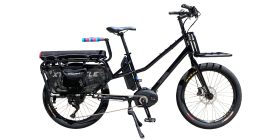
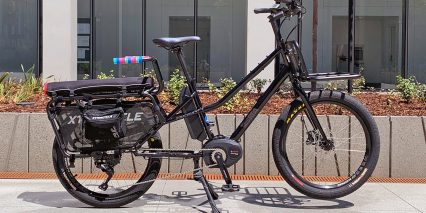
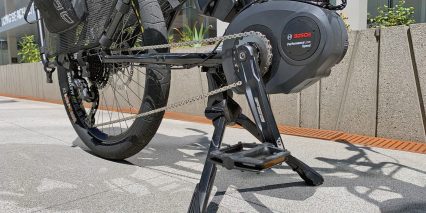
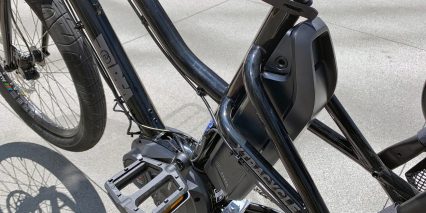
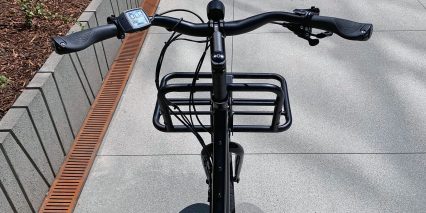
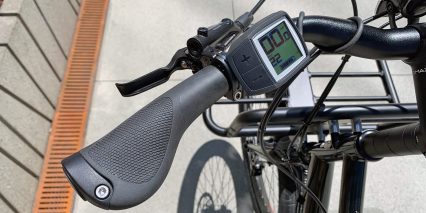
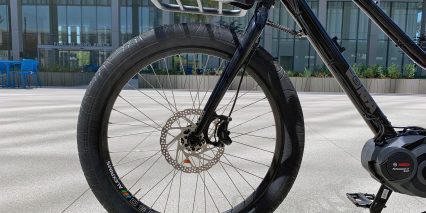
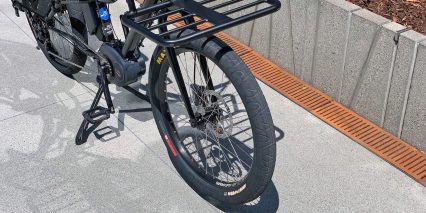
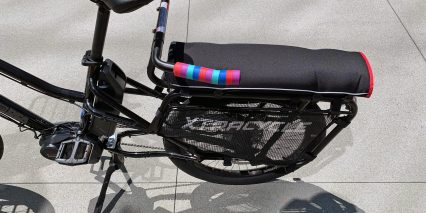
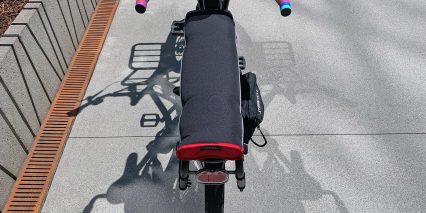
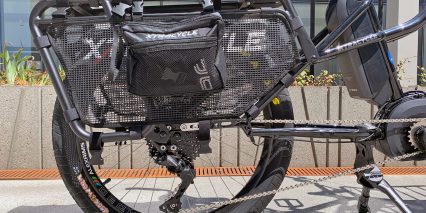
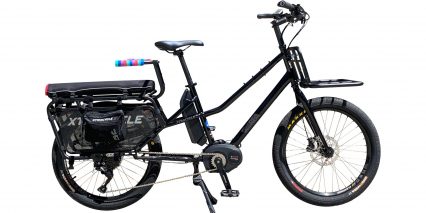

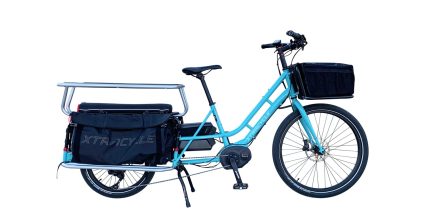

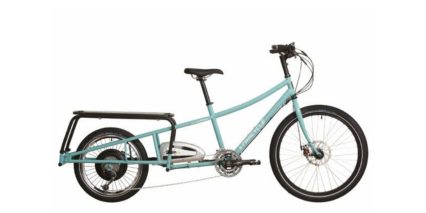
bubbajank
5 years ago$4500? brb, buying 3 Rad bikes…
ReplyCourt
5 years agoYeah, some of these bikes are pretty pricey! I love what Xtracycle does, and really admire their founder, but it’s great to have choices at different price levels these days. So many ebikes to choose from :D
ReplyByrun
4 years agoI just did a short test of an RFA Sport this weekend and was really impressed. Like you I have a knee injury, and am looking at getting back into cycling. I also don’t want a car and like the idea of a cargo bike. I loved the riding position, the pick up was almost effortless, and I really did not want to turn around an return to the shop as soon as I did. I have a few other bikes to test, but this is a contender. And I am impressed by my interactions with Xtracycle. I could go for a more affordable bike – especially after the 2021 price bump – but looking at the more economic options out there… well, you really do seem to get what you pay for.
ReplyCourt
4 years agoHi Byrun, it really seemed like a great ebike. I hope you enjoy it if you decide to go for it!
Reply